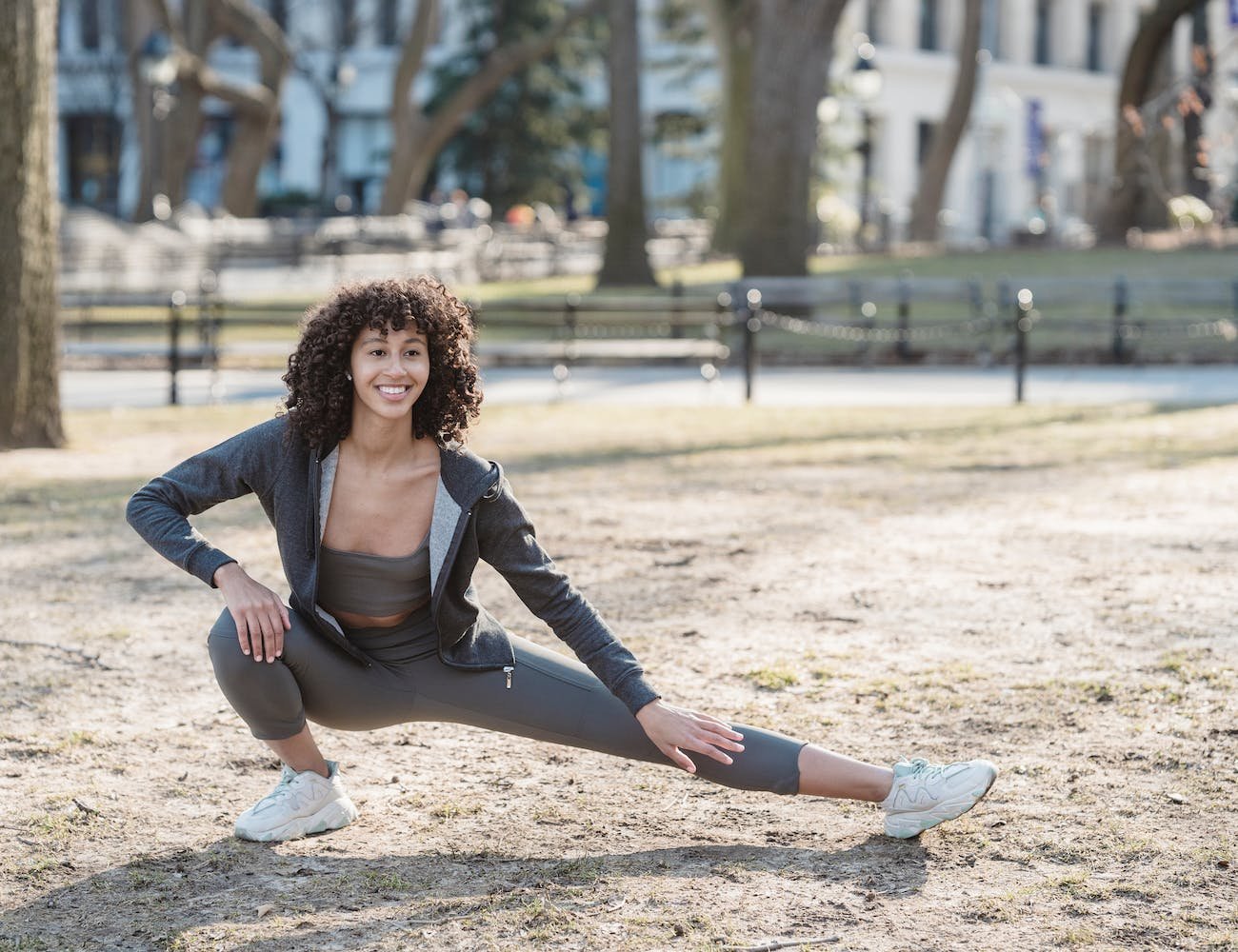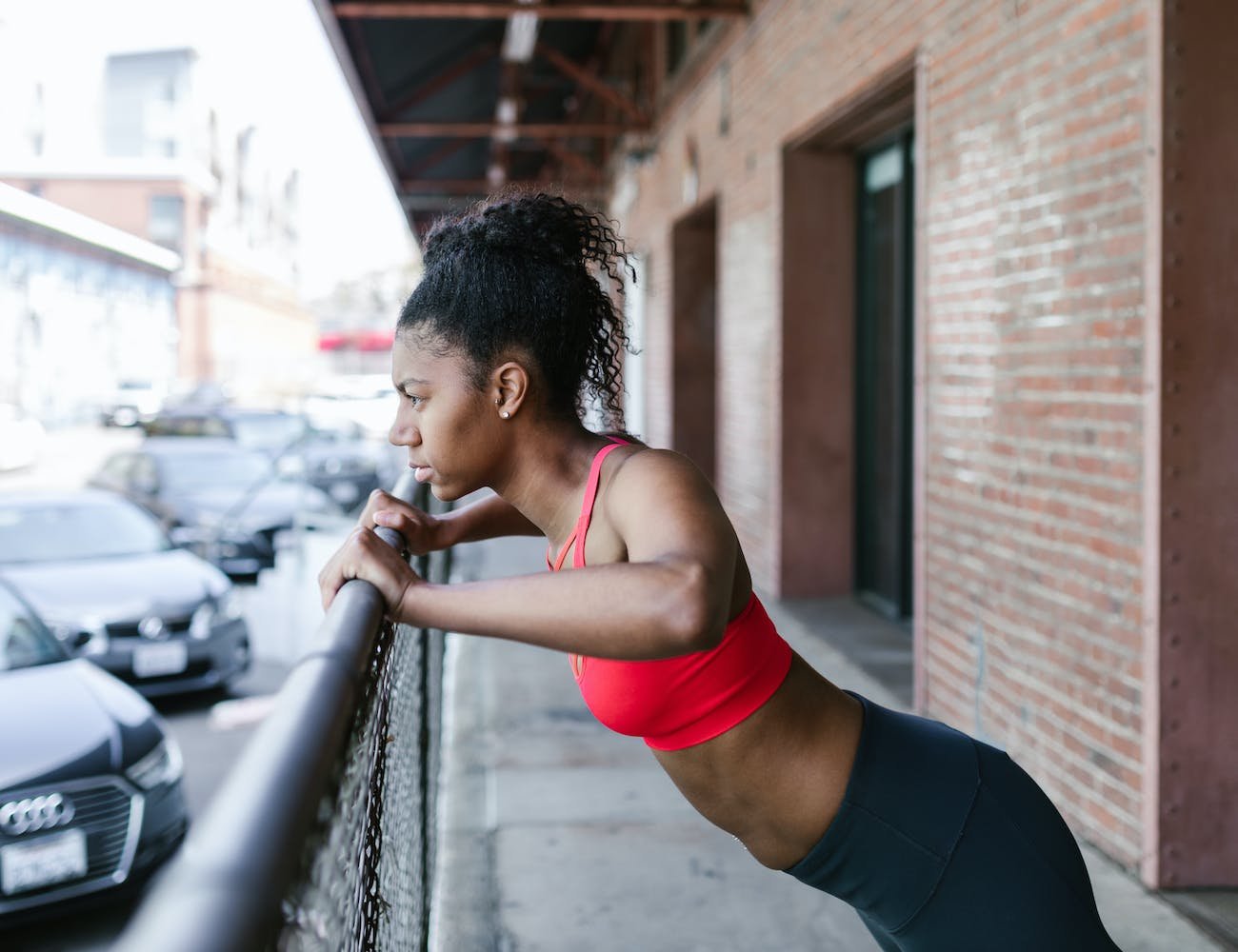
Unveiling Indoor Vs Outdoor Aerobics: Pros and Cons for Your Ultimate Fitness Routine
“Indoor vs Outdoor Aerobics: Pros and Cons for Your Fitness Routine”
A recent study illuminating the preferences of aerobics enthusiasts has brought to light a fascinating trend: over 60% favor outdoor activities over indoor workouts, with the allure of the natural environment being a primary motivator. This statistic not only highlights a growing inclination towards embracing the great outdoors for fitness but also underscores the evolving dynamics of exercise routines in our modern world.
As a seasoned fitness enthusiast, I’ve often found myself pondering the profound impact that the setting of a workout can have on its overall quality and effectiveness. The world of fitness is vast, and the choice between indoor and outdoor aerobics is more than a mere preference—it’s a decision that can shape one’s entire exercise experience.
Indoor workouts, with their controlled environments, offer a level of predictability and convenience that is hard to match. The access to specialized equipment in these settings opens up a plethora of opportunities to fine-tune and intensify workouts, making them more efficient and goal-oriented. For those looking to delve deeper into specialized training methods, resources like “Advanced Aerobic Techniques” provide invaluable insight into maximizing the potential of indoor workouts.
Conversely, the great outdoors presents a dynamic and ever-changing backdrop for aerobic activities. There’s something inherently invigorating about exercising in the midst of nature, be it a tranquil park or a bustling city street. The benefits of fresh air, natural light, and the varying terrain contribute not only to physical health but also to psychological well-being. However, these benefits do come with their own set of considerations, such as environmental pollutants and safety concerns, which necessitate a careful approach. The impact of outdoor exercise on mental health, as explored in “Aerobic Exercise Reducing Stress and Anxiety” offers compelling reasons to step outside for your fitness regime.
As we delve into the nuanced world of indoor vs outdoor aerobics, it’s intriguing to consider how the choice of venue influences not just our physical well-being but also our mental resilience and social interactions. These aspects are crucial for sustaining a long-term exercise regimen and achieving a holistic sense of health and wellness. Whether it’s the structured environment of an indoor gym or the liberating expanses of the outdoors, each setting brings its unique set of advantages and challenges to the table.
In this exploration, we’ll dissect these variables, understanding how they sway individual preferences and how they can be harmoniously integrated into one’s fitness journey. So, as we lace up our sneakers, let’s ponder – will it be the familiar confines of the gym or the unpredictability of the great outdoors that will host our next workout?
Understanding Indoor vs Outdoor Aerobics: The Indoor Perspective
Indoor Aerobics: A Controlled Environment
When comparing indoor vs outdoor aerobics, the controlled environment of indoor settings stands out. This consistent availability is key in ensuring that my indoor aerobics routine isn’t disrupted by changing weather, a crucial advantage over outdoor options.
Variety in Indoor Aerobic Exercises
The diversity of exercises within the realm of indoor aerobics is vast compared to outdoor options. From high-energy step classes to gentle aquatic workouts, indoor aerobics offers a range of activities that cater to varying fitness levels and preferences, making it a versatile choice in the indoor vs outdoor aerobics debate.
The Role of Music in Indoor Aerobics
In the indoor vs outdoor aerobics comparison, the integration of music in indoor settings is a unique benefit. Tailored playlists enhance the indoor aerobic experience, providing motivation and synchronizing movements to create an engaging atmosphere that is hard to replicate in outdoor settings.
Safety and Instruction in Indoor Aerobics
Safety and professional guidance are key aspects of indoor aerobics, making it a strong contender in the indoor vs outdoor aerobics discussion. The indoor environment offers a safe space from external factors like pollution and traffic, and access to professional instructors ensures correct technique and maximized effectiveness.
Customizing Indoor Aerobic Workouts
The ability to tailor workouts to individual needs is a significant advantage of indoor aerobics over outdoor options. Whether adjusting intensity or focusing on specific muscle groups, indoor aerobics provides the flexibility for personalized fitness experiences.
Indoor aerobics also offers a safe haven from external factors such as pollution and traffic. This environment allows for focused fitness sessions without distractions. The presence of professional instructors is invaluable for ensuring correct exercise execution, reducing injury risk, and maximizing workout effectiveness.
Tailoring Indoor Workouts to Individual Needs
Indoor aerobics stands out for its ability to be tailored to individual fitness levels and preferences. Adjusting the intensity of cardio sessions or selecting specific muscle-targeted exercises allows for a highly personalized workout experience. This customization not only improves physical outcomes but also enhances the overall enjoyment and effectiveness of each workout.
Benefits of Outdoor Workouts
Turning my focus to outdoor workouts, I’ve found they offer a visual and sensory experience that indoor routines can’t match.
Breathing in fresh air during a run, I sense an invigorating quality that indoor air systems can’t replicate.
Moreover, exercising under the sun not only lifts my spirits but also provides an essential dose of vitamin D, crucial for bone health and immune function.
Natural Scenery Boost
Exercising outdoors provides a visual feast, as natural landscapes offer a unique and dynamic backdrop that can enhance the overall workout experience. Unlike the static walls of a gym, an urban backdrop constantly changes, energizing my routine. Even occasional wildlife interruptions can be a delightful surprise, reminding me of the freedom that comes with being part of a larger ecosystem. Here’s a concise breakdown of the benefits:
| Aspect | Benefit | Consideration |
|---|---|---|
| Visual Variety | Stimulates the mind | Can vary by location |
| Sensory Richness | Engages all senses | Weather dependent |
| Wildlife | Adds unpredictability and excitement | May cause minor delays |
| Urban Backdrop | Offers cultural vibrancy | Can be noisy |
| Mental Health | Reduces stress, boosts mood | – |
This environment fosters a sense of autonomy, allowing me to choose my path literally and figuratively, which is liberating.
The Fresh Air Advantage in Outdoor Aerobics
When considering indoor vs outdoor aerobics, the fresh air advantage of outdoor workouts significantly enhances the physiological benefits. During activities like trail running or cycling in natural surroundings, the fresh air experience is incomparable. This aspect of outdoor aerobics brings not only a sense of liberation but also tangible health benefits:
- Enhanced Oxygen Intake: The fresh air in outdoor settings is rich in oxygen, which is crucial for improving cardiovascular health and boosting endurance. This is a stark contrast to the often recycled air found in indoor environments.
- Immune System Boost: Exposure to the diverse environmental elements in outdoor aerobics can help strengthen the immune system, a benefit less likely to be gained from indoor exercises.
- Stress Reduction: Engaging in outdoor aerobics facilitates stress relief and promotes mental clarity, contributing to overall well-being.
- Allergy Relief: For those sensitive to indoor allergens, outdoor aerobics offers an escape, reducing exposure to indoor triggers.
The choice of outdoor aerobics within the broader scope of indoor vs outdoor aerobics offers a sense of freedom and a connection to the natural world that indoor settings can’t replicate.
Vitamin D Gain Through Outdoor Aerobics
In the debate between indoor vs outdoor aerobics, one cannot overlook the significant health benefits of vitamin D gained from sunlight during outdoor workouts. This essential nutrient plays a vital role in numerous bodily functions:
- Bone Health: Regular exposure to sunlight during outdoor aerobics enhances vitamin D levels, which is crucial for maintaining bone strength and preventing conditions like osteoporosis.
- Mental Health Benefits: Vitamin D from sunlight exposure can help in mitigating Seasonal Affective Disorder (SAD), a type of depression that often occurs during the less sunny months.
- Natural Vitamin D Source: Unlike indoor aerobics, outdoor workouts provide direct access to sunlight, a natural and effective source of vitamin D.
The decision to engage in outdoor aerobics, as part of the indoor vs outdoor aerobics consideration, is more than just a preference; it’s a strategic choice for enhancing physical and mental well-being, taking advantage of the unique benefits that only the natural outdoor environment can provide.
Climate Control and Comfort
When I consider where to perform my aerobics routine, climate control and comfort are significant factors. Indoors, the temperature remains stable, allowing for a consistent workout environment, free from the unpredictability of outdoor weather conditions.
On the flip side, exercising outside can subject me to the elements, potentially disrupting my exercise schedule and comfort.
Climate Control and Comfort in Indoor vs Outdoor Aerobics
When deliberating between indoor vs outdoor aerobics, climate control and comfort emerge as key deciding factors. In indoor settings, the ability to manage the environment allows for a consistent and comfortable workout experience, free from the uncertainties of outdoor weather conditions.
Temperature Stability Indoors: A Highlight in Indoor vs Outdoor Aerobics
One of the most significant advantages of indoor aerobics over outdoor options is the ability to maintain a consistent temperature. This stability is vital for ensuring both comfort and performance:
- Relief from Weather Extremes: The controlled climate of indoor aerobics means that extreme weather conditions, such as heatwaves or cold snaps, do not disrupt the exercise routine, a contrast to the potential unpredictability faced in outdoor aerobics.
- Humidity Control: Indoor settings often include the ability to manage humidity, adding a level of comfort that enhances the workout experience. This feature is particularly beneficial in preventing issues related to excessive sweating or dehydration, which can be more challenging to manage in outdoor aerobics.
- Predictable and Consistent Environment: Indoor aerobics offers a predictability that is essential for those who prefer a routine where conditions are consistent and conducive to regular training, as opposed to the variability often encountered in outdoor aerobics.
Comfort and Environmental Control in Indoor Aerobics
The aspect of comfort in the indoor vs outdoor aerobics discussion extends beyond just temperature. Indoor environments offer a level of control over other environmental factors, such as air quality and lighting, contributing to an overall more comfortable and focused exercise experience:
- Air Quality Management: Indoor settings provide an opportunity to exercise in air that is filtered and of controlled quality, a significant consideration for those with respiratory sensitivities or allergies, where outdoor aerobics might pose challenges.
- Customized Lighting: The lighting in indoor aerobics settings can be tailored to the time of day and type of workout, ensuring optimal visibility and ambiance, a feature that outdoor aerobics cannot consistently offer.
Balancing Climate Comfort in Indoor and Outdoor Aerobics
In weighing the options of indoor vs outdoor aerobics, it becomes clear that each setting offers unique benefits in terms of climate control and comfort. While indoor aerobics provides a controlled and predictable environment, outdoor aerobics offers the invigorating experience of natural elements. The choice between the two often depends on individual preferences for environmental consistency versus the dynamic nature of the outdoors.
Ultimately, the decision in the indoor vs outdoor aerobics debate hinges on personal comfort levels and how environmental factors impact one’s overall exercise experience. Whether opting for the climate-controlled comfort of indoor aerobics or embracing the natural variability of outdoor workouts, each choice offers its unique pathway to achieving fitness goals.
Comfortable Exercise Environment
While outdoor aerobics requires a wardrobe tailored to unpredictable weather, indoor exercise offers a climate-controlled environment that ensures consistent comfort regardless of the season. Choosing the right exercise attire becomes a simpler task without the need to consider external elements. I’m free to focus on my performance, and not on whether I’ll be too hot or too cold.
- Stable temperatures: No need to layer up or strip down mid-workout.
- No weather disruptions: Rain or shine, my routine remains unchanged.
- Customized comfort: I control the humidity and airflow to suit my preferences.
- Efficient hydration strategies: Access to water isn’t dictated by outdoor conditions.
This controlled setting allows me to streamline my workout process, optimizing for comfort and eliminating external variables that could distract from my fitness goals.
The Fresh Air Factor
Amidst the myriad benefits of aerobic exercise, the fresh air factor plays a pivotal role in distinguishing outdoor activities from their indoor counterparts. When I step outside to engage in aerobic exercise, I’m not just moving my body; I’m immersing myself in an environment that can significantly enhance my workout’s quality.
Urban greenery, for instance, isn’t simply a visual treat. It’s a vital component of the outdoor exercise equation, offering a natural source of oxygen which can be scarce in densely populated areas where buildings outnumber trees.
Oxygen levels are crucial for efficient aerobic respiration; the process our cells use to generate energy. While indoor settings can have controlled air quality, they often lack the natural variation and higher oxygen content that outdoor environments provide. It’s this oxygen-rich air that fuels my muscles more effectively during a vigorous outdoor workout.
The psychological impact of the fresh air factor shouldn’t be underestimated either. Being outdoors, surrounded by nature, can invigorate the senses and refresh the mind, which is a form of freedom that many of us crave. This mental clarity and the sense of liberation I feel when exercising outside contribute to a more focused and productive session, enhancing the overall fitness experience.
While outdoor workouts are subject to weather and air quality conditions, they offer a unique blend of benefits that indoor exercises can’t replicate. The fresh air factor isn’t just about the physical boost from breathing cleaner air; it’s about tapping into a sense of freedom that comes with being out in the open, where I can push my limits surrounded by the boundless sky and the earth beneath my feet.
Equipment and Space Availability
Moving beyond the invigorating benefits of fresh air, it’s essential to consider how equipment and space availability shape the experience of aerobic workouts, whether they’re conducted indoors or under the open sky. When I’m planning my fitness routine, I’ve got to think about where I’ll be executing my moves and what gear I’ll need.
In the confines of an indoor gym, space constraints can be a real issue. I’ve got to navigate around others, wait my turn for machines, and sometimes, I can’t even spread out as much as I’d like for certain exercises. On the flip side, the variety of specialized equipment at my fingertips can elevate my workout to new levels – though it comes at a price. Equipment cost for home gyms or gym memberships can add up quickly, and that’s a financial commitment I’m constantly weighing.
Outdoor aerobics offer me the freedom to use as much space as I like, but it’s not all sunshine and rainbows. Public parks or spaces can get crowded, and I’ve got to deal with varying terrain, which can be both a pro and a con, depending on my workout goals.
To grab your attention, consider these key points:
- Indoor spaces may limit movement variety due to space constraints.
- Outdoor workouts provide expansive space but are subject to environmental variables.
- Gym memberships and home equipment entail ongoing equipment cost.
- Nature’s equipment is free, encouraging improvisation and creativity.
Indoor aerobics certainly offer consistency and control over my environment, but there’s something about the liberty and unpredictability of outdoor workouts that can be truly exhilarating.
Safety and Air Pollution Concerns
Considering the aspects of safety and air quality, it’s crucial to note that indoor aerobics can offer a more controlled environment, free from the concerns of traffic and pollution. When I take my fitness indoors, I don’t need to worry about the unpredictable factors that can compromise my safety or breathing—such as urban sprawl, which often brings with it busy streets and longer commutes. These elements can make outdoor exercising less safe, especially when roads are shared with vehicles, increasing the risk of accidents.
Indoors, I also have the advantage of avoiding allergen exposure which can be a significant concern, particularly during seasonal peaks. Outdoor workouts can expose me to pollen, mold, and other allergens that can trigger reactions, potentially disrupting my exercise routine and overall well-being.
On the flip side, the very act of taking my workouts outside does allow me to escape the confines of walls and artificial lighting. But it’s imperative to weigh this freedom against the potential harms of air pollution—an insidious threat in many urban environments. Exercising in areas with high levels of pollutants can do more harm than good, negating some of the cardiovascular benefits I aim for during aerobics.
As someone who values the liberty to choose where and how I exercise, understanding the risks and benefits of each environment empowers me to make informed decisions. It’s about finding a balance that aligns with my fitness goals while prioritizing my health and safety—whether that means enjoying the sanctuary of an indoor space or carefully selecting an outdoor setting that minimizes exposure to traffic, pollution, and allergens.
Social Dynamics and Motivation
In evaluating the impact of social dynamics on my motivation, I’ve noticed that the camaraderie of group classes in indoor settings often fuels my enthusiasm for aerobics. There’s something about being surrounded by like-minded individuals that pushes me to perform better and stay committed.
In contrast, outdoor aerobics can sometimes feel isolating, especially if done alone. However, participating in community events can replicate that sense of togetherness outdoors.
To grab your attention, here are four key points to consider regarding social dynamics and motivation:
- Community Events: Outdoor fitness can be socially enriching when aligned with community events that bring people together.
- Accountability Partners: Indoor settings facilitate forming accountability partnerships, which are crucial for consistency.
- Group Classes: The structured environment of indoor group classes can lead to stronger social bonds and motivation.
- Individual Freedom: Outdoor aerobics offer the freedom to choose one’s social interaction level, which can be empowering.
I’ve found that having accountability partners in an indoor setting helps me stay on track. They’re the ones who nudge me to attend classes even when I’m not feeling up to it. On the other hand, outdoor aerobics allows me the freedom to join community events on my terms, engaging with others when I choose to.
Ultimately, both indoor and outdoor aerobics have their unique social benefits that can enhance motivation. It’s about finding the right balance that suits my desire for community engagement and personal freedom. Whether it’s the structured camaraderie of an indoor class or the liberating choice to join a park run, each setting offers a distinct way to enrich my fitness routine with social interactions.
Adapting to Weather Challenges
While the social aspects of aerobics significantly influence motivation, weather conditions present a stark contrast in challenges between indoor and outdoor settings. I’ve learned that outdoor enthusiasts must constantly adapt to the whims of nature, which can be both exhilarating and daunting. Seasonal allergies, for instance, can turn a routine workout into a sneezing, watery-eyed ordeal, pushing me toward indoor alternatives when pollen counts soar.
Dressing appropriately becomes a critical skill when I’m facing the outdoor elements. Layering allows me the flexibility to adjust to changing temperatures, but it requires foresight and experience to get right. On the flip side, indoor aerobics relieve me of this concern, offering a controlled environment where I can wear the same gear year-round.
Here’s a table to break down some of the specific challenges I’ve encountered:
| Outdoor Aerobics Challenge | Indoor Aerobics Challenge |
|---|---|
| Adapting to temperature swings | Ensuring proper hydration |
| Combating seasonal allergies | Avoiding crowded spaces |
| Dressing appropriately for weather | Dealing with stale air |
| Dealing with rain or snow | Adjusting to artificial lighting |
| Protecting skin from sun expo sure | Missing out on natural vitamin D |
Each setting demands a different strategy for success. Indoors, I’m tasked with staying motivated without the natural beauty and variable terrain that invigorates my outdoor sessions. Outdoors, I’m at the mercy of mother nature, requiring a resilient mindset and a willingness to modify my routine at a moment’s notice. Regardless of where I choose to exercise, the goal remains the same: achieving a level of fitness that grants me the freedom to live life to the fullest.
Frequently Asked Questions
How Can Indoor Aerobics Affect My Circadian Rhythm Compared to Outdoor Activities?
Indoor aerobics can disrupt my circadian rhythm due to artificial lighting, potentially affecting sleep quality. I prefer natural light, which aligns my internal clock with the day-night cycle for better rest.
Are There Any Differences in the Impact on Vitamin D Levels When Exercising Indoors Versus Outdoors?
Basking in the sun’s embrace, I boost my Vitamin D synthesis, something indoor workouts can’t match. Without sun exposure, there’s a stark difference in the vitamin’s levels in my body.
Can Indoor Aerobics Contribute to a Feeling of Isolation, or Does It Generally Foster Community Through Classes?
I’ve found that indoor aerobics can sometimes feel isolating, but often, it actually promotes social interactions and mental wellness through engaging classes, fostering a sense of community among participants who value their freedom.
How Does the Cost of Maintaining a Regular Indoor Aerobics Routine Compare to Outdoor Workouts Over the Long Term?
I’ve found that indoor aerobics can be costlier due to equipment expenses and membership fees, while outdoor workouts often require less financial commitment, offering more freedom and flexibility in my fitness budget.
Are There Specific Types of Aerobic Exercises That Are Uniquely Beneficial When Performed Outdoors That Cannot Be Replicated Indoors?
I’ve found that trail running and parkour fitness offer unique benefits outdoors due to natural terrain, which indoor environments can’t replicate, enhancing balance, agility, and mental clarity for those seeking liberating workouts.
Conclusion
Navigating the diverse terrain of fitness, my journey has led me to a deep appreciation for both indoor and outdoor aerobics, recognizing them as integral, complementary elements of a well-rounded fitness regime. Indoors, I engage in the disciplined world of “High-Intensity Interval Training (HIIT) Aerobics” and other structured routines. This controlled environment offers the predictability and consistency necessary for focused, goal-oriented workouts. It’s like having a personal fitness studio, where every element, from temperature to equipment, is tailored to my specific workout needs.
In contrast, stepping outdoors, I immerse myself in nature’s unpredictable theater. Here, the environment is ever-changing – a living, breathing backdrop that brings its own set of challenges and rewards. Outdoor aerobics isn’t just about physical health; it’s a holistic experience that nurtures my mind and spirit. The sensory richness of a natural setting – the warmth of the sun, the rustle of leaves, the varying terrain – each adds a unique dimension to my workout, making it as mentally stimulating as it is physically invigorating.
This duality of indoor precision and outdoor freedom creates a fitness journey that is dynamic and balanced – akin to navigating between the calm, familiar harbor of a well-equipped gym and the adventurous open sea of natural landscapes. By embracing both worlds, I’ve crafted a routine that adapts to the ebb and flow of life’s tides, optimizing my health odyssey.
The synergy of indoor and outdoor workouts has taught me valuable lessons about adaptability, resilience, and the joy of fitness. Indoors, I focus on targeted goals and specific fitness milestones, using the variety of equipment and the absence of external distractions to my advantage. Outdoors, I let spontaneity guide me, using the landscape as my playground, and embracing the unexpected as part of the thrill.
This blend of environments enriches my fitness routine, making it a journey of discovery and growth. Whether it’s the disciplined pursuit of fitness goals indoors or the explorative freedom of outdoor activities, each setting offers its unique pathway to health and wellness.





Leave a Reply
You must be logged in to post a comment.